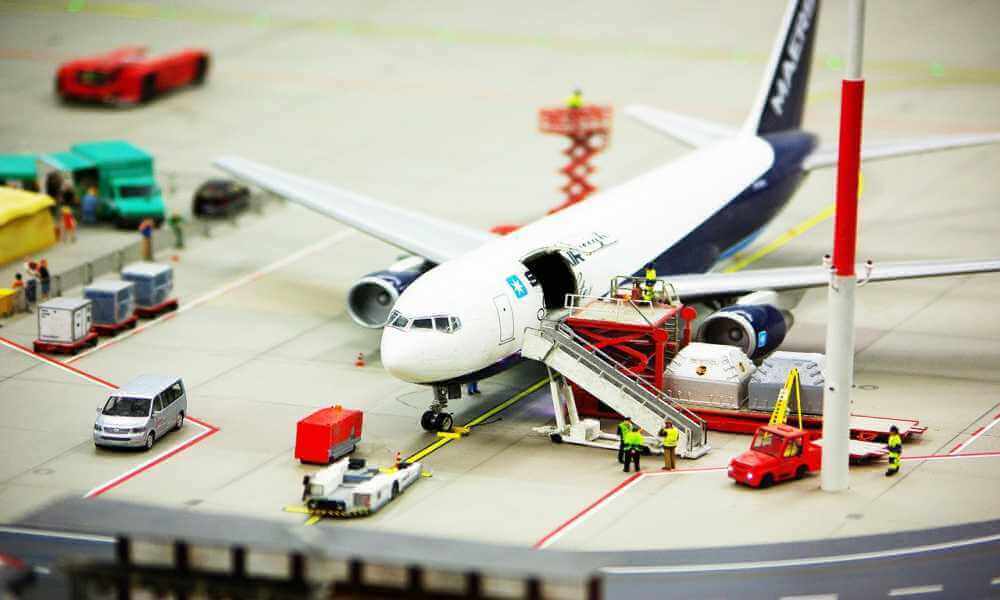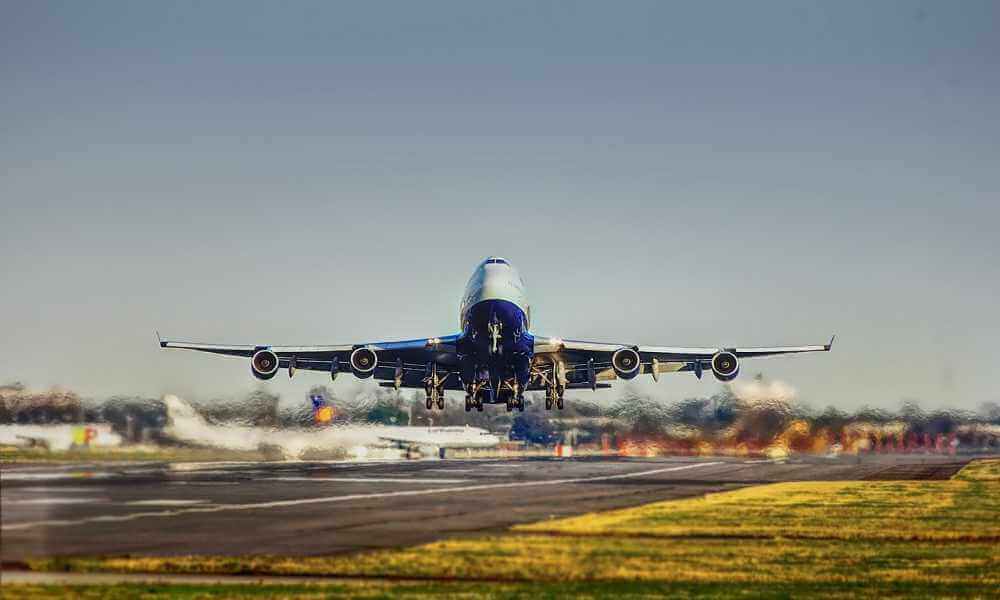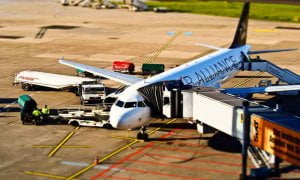Impact of Air Travel on Human Health: Dengue, Malaria, Tuberculosis and Influenza are other common disease, which can spread due to transmission (through mosquitos, insects, animals and other passengers). Generally most of passengers travel in flight without knowing the health hazards issues of air travel. Most of the disease occurs due to lack of regular sleep, prolonged sitting in vertical posture etc. The present module shall discuss about the effect of air travel on human health. The module shall also discuss about the various health’s related diseases which can occur to human beings while travelling through air.

Environment of Flight and Impact on Human Health:
Generally Airline environment is not healthy for passengers as flight operators at a high altitude of 10,000 feet to 50,000 feet normallyand can results in the following:
Impact of Air Travel on Human Health
- Reduced Atmosphere Pressure: As we reach heights atmospheric pressure continues to fall and results in expansion of gas, which affects, lungs, intestine etc.
- Reduced Oxygen Level: As the Airplane attains the height the atmospheric pressure and oxygen levelget reduced and which can results into Hypoxia.
- Reduced Temperature: Pressurized cabin are there in airplane in order to prevent hypoxia. As plane attains height the temperate gets reduced.
- Environment of Cabin: Outside air is compressed by jet engines in order to maintain the required pressure level in the cabin. The proper air ventilation in the cabin is required in so as to prevent pollutants and to give passengers a comfortable and safe flight experience.
- Quality of Air Cabins: The quality of the air in the Cabin is the most debated issue among passengers. Air quality affects due to smoke (tobacco), dry and stuffy air and reduced temperature. To maintain the quality of air in the cabin, pressurized air is passed in the cabin with the help of jet engines. High Efficiency Particulate Filter (HEPA) is there to prevent particles like hydrocarbons. Most of airlines don’t allow smoking in the aircraft, but several incidents are there where smoke, vapors and fumes enter in the cabin thereby resulting in reduced air quality and become a source of irritation to the passengers. Other things that can affect air quality in cabin are perfumes, pesticides, cleaning agents, food and beverages products, paints and chemicals etc.
Commercial Flight Health Effects:
- Stress Occurs before Departure of Flight: The airports always have the busy environment. The passengers have to be in the long waited queues for check-in and security check procedures. The passengers because of these lengthy and hectic procedures get stressed, irritated, and uncomfortable and tired which results incusing mental and physical stress to them.
- Hypoxia: The air is too thin to breath at the height of 10,000 meter above sea level, so the cabins are properly pressurized. The ventilation is done in order to maintain air quality inside the cabins; but still the oxygen level is reduced inside the cabin and passengers can breathe the less amount of oxygen; as he can breathe at the ground. It results in to the drop of oxygen level in the human blood up to 5 percent. The exterior oxygen is added during the flights but that is not enough as to maintain the original oxygen level in the human blood. This causes altitude sickness due to reduced atmospheric pressure. The lower oxygen level in the blood results in headache, nausea, stomach blotting, vision impairment, fatigue and lack of concentration. People suffered from cardiovascular disease need to take advice from their doctor before travelling through air, because reduced oxygen level is the major cause of heart attack and in the long haul flight situation can be worse.
- Deep Vein Thrombosis (DVT)/ Cramped Conditions: It is caused due to prolonged siting. This is mostly reported and found in economic class passengers but business and first class passengers also suffered from DVT. It is more commonly found in people who use to smoke and are suffering from, illness and other medications. It results in blood disorders (clotting). The Cardiovascular diseases affects pregnancy, increase blood viscosity, obesity etc. DVT is at peak if someone is travelling for more than eight hours and if passenger is suffering from cancer than the risk of having DVT is almost get doubled.
Impact of Air Travel on Human Health
Things to consider to prevent cramped conditions:
- Reduce the consumption of alcohol and caffeine products
- Drink ample amount of water
- Hydrate your skin and lips as well
- Don’t sit for long time, walk around and stretch out legs Do muscle exercise during the flight
- Jet lag (Circadian Dysrhythmia): Circadian Dysrhythmia affects many physiological functions based on 24-hour cycle. It also occurs due to lack of regular sleep, prolonged seating; which results in fatigued body and Jet Lag.
- Motion Sickness: Aircraft changes position while flying due to number of factors. During this time the passenger’s vestibular system stimulates. The vision stimulation occurs that results in nausea, vomiting, stomach disorders etc. The best way to prevent the motion sickness is to use the headrests and closing of eyes to stop continues movement of eyes.

Impact of Air Travel on Passengers with Diseases:
The passengers on their health while traveling through air can observe the following effects:
- Pulmonary Conditions: Passengers with hypoxemia, bronchial asthma and chronic obstructive pulmonary disease (COPD) required taking proper medication when supposed to travel by air.
- Neuropsychiatric Conditions: Passengers with severe neuropsychiatric conditions must avoid flights because it can leads to aggressive behavior, which results in stress provoke. Oxygen support is very necessary for such kinds of passengers.
- Cardiovascular Disease: Flights are unsuitable for the passengers who have recently gone through a bypass surgery, unstable heart failure and coronary artery disease. Air travel can affect their blood circulation and respiration.
Health Events on Board:
Every year number of passengerhas been reported suffering from travel disease and even number of deaths occurs during the course of flight. To prevent such causalities emergency medical kits have been placed there in every flight and minimum standards are there for medical kits made by Federal Aviation Administration (FAA).
Emergency Medical Kit On-Board: Federal Aviation Administration (FAA) medical kit must include, blood pressure cuff wipes (antiseptic), a stethoscope, gloves (sterile), needle (Hypodermic) and syringes and nitroglycerin etc. Now most of the airlines providedoctor availability to the cockpit during24 hours.
Environmental Impact of Flight:
- Noise: It is the unacceptable sound of jet engine, whichresults in disrupting sleep, frightening children. It also affects human health caused decreased quality of life and affects blood pressure.
- Ozone: Depletion of ozone occurs due to aircraft flying above 50,000 feet.
Health Risks of Air Travel:
Some of the risks, which are associated with air travel, are discussed as follows:
- Dehydration: This is reported common to the passengers traveling through air.Passenger should drink more water during air travel. Better to take more fruits, vegetable to prevent fromdehydration.
- Lung Damage: Air is not completely purified in the cabin and contains fumes, smoke etc. with it. However air ventilation and purifiers are there in the aircraft, still it does not give passengers pollution free air and which can results into lung damage as well.
- Bedbugs: Bedbugs and lice can be there on the aircraft seats, blankets and headrests. As number of people travels and seated on the same seat infection rate is very much higher. A plane takes 2-4 flights in one day. It is better to spray peppermint or Tee Tree oil on passenger’s seats to reduce the risk of lice and bedbugs.
- Increased Cancer Risk: Long trips on air travel affects body clock and hormone level. They also affect, chemical imbalances, which, results in tumor growth. Passengers and crew are also exposed to radiations on the high altitude while travelling through air.
- DVT: Deep Vein Thrombosis is most commonly occurringin obese and elderly people. The reasonof occurrence of DVT in air travelers is because of that they are packed into their seats like sardines. Due to vertical position of passenger during flight the proper blood circulation may be affected. Better is to walk and move around to prevent the DVT during flight.
Impact of Air Travel on Human Health
For better Flying Experience:
For better flying experiences and enjoyable flights the passengers must take following things into their consideration:
- Eat Little: The passengers must take their meal well in advance before boarding the plane. Better to eat more vegetables, fruits and water than carbonated drinks and junk food. The passengers must choose tea over coffee.
- Drink ample amount of water: The passengers must drink or intake a lot of water in order to prevent dehydration. It’s better to hydrate the skin by water spray on the face or by essential oils.
- Better to plan trip in advance: The passengers are advised to plan their trip well in advance. They should more emphasize on what they need the necessary items during the flight. The food and other things required during journey and must follow proper sleeping schedule.
- Blood Oxygen Drops: Lower oxygen level leads to fatigue and passenger feel sleepy. Blood circulation is not done properly therefore the passengers need to extend their legs to circulate blood properly in their body.
Impact of Air Travel on Human Health
Other Hazards of Air Travel:
Some other hazards which have been reported during air travel include the following:
- Lift-Off: Full body scans either through X-rays flashlight as well as low energy radiowaves affects frequent air travelers and cabin crew staff which results in cancer and cardiovascular diseases, vision and hearing loss and mental disorders.
- Disease: Low humidity in flight leads to get a cold, nausea.
- Economy Class Syndrome: A pulmonary embolism isoccurring while the passenger sits for a long time. It also creates uncomfortable nuisance, even can kill the passengers by causing blood clots formation. DVT is also an economy class syndrome. Passengers can prevent it by wearing loose clothing, drinking lot of water, stretching and walking.
- Hearing Loss: As the passengers fly more, more is a risk of hearing loss. According to National Institute for Occupational Safety and Health (NIOSH) safety limit is 88 decibels for 4 hours flight and 85 decibels for 8 hours flight. Passenger seating in the back seat have more chances of hearing loss. The best option is to use noise-reducing headphones they can cut noise up to 40 decibels.
- Cosmic Rays: As the passengers fly more and the more they are near the North Pole they are exposed to cosmic rays. These are energetic particles from space can cause even cancer.
Hidden Health Risks and Social Consequences:
Frequent passengers who travel a lot because of business meetings or other work; air travel is the most comfortable and time saving mode for them, but it also involves some hidden health risks associated which are associated with the air travel. Some of them are discussed ahead.
- Physiological Impact: Prolonged sitting and vertical posture of body prevent proper blood circulation results in DVT. Jet Lag occurs due to body clock, long haul flight and results into disruption of bodies’ circadian rhythms. It can cause fatigue and gastrointestinal problem also affects the immune system, increases the risk of stroke and heart attack, can also cause cognitive deficits like memory impairment etc. High amount of radiation exposure is also there for frequent flyers and cabin crew members’ results in cancer causing problems. Above all is physiological impact.
- Psychological and Emotional Impact: Stress is the main psychological impact due to long que airport operations (check-in procedure, baggage handling, security check etc.), beside that business passenger has workload stress. Flight delays results into fatigue and increased anxiety factor in passengers. Social gathering and family time is also affected by the regular and excessive air travel. Children also become irritated when their parents used to be more on travel and away from home. Frequent travel results in imbalance in domestic, social involvement and children care. Burden on women increases due to busy trips of men resulting in weakening friendship and social network. So a negative impact is there a frequent air travel which makes passengers irritated, restless, angry and aggressive.
Impact of Air Travel on Human Health
Aviation safety hazards:
Aviation safety is of utmost important. Number of items may be left in the aircraft during repair or manufacturing parts and sometimes on the runway even, which can cause major airplane crashes. It comes under Foreign Object Debris (FOD).
For. E.g. Number of people died in Air France Flight 4590 due to crashing of plane by hitting with the part that is fallen from another aircraft.s
- Lack of Information: Lack of information leads to accidents. For e.g. a pilot can be misinformed by a printed document (manual, map etc.).
- Snow and Ice: Snow and Ice are the major cause of accidents. Adequate lift of the plane is not possible even with the small amount of frost/icing on the airplane wings. Airports and aircrafts are regularly deiced before takeoff. Modern aircrafts are designed to prevent ice buildup on wings, engine and tails by heated air from jet engines. For e.g. As a result of ice/snow on aircraft wings Air Florida Flight 90 crashed in 1982
- Engine Failure: Due to fuel starvation the engine fails to function, poor maintenance of aircraft leads to mechanical failure. Sometimes emergency landing is not possible which leads to aircraft crashing. For e.g. Aloha Airline Flight 243 met with accident due to lack of fuel, and a number of passengers died in this crash.
- Fire: Automated fire systems are installed in the airplanes for safety and security of passengers in the aircraft from fire. Number of fire accidents has been reported in aircraft; most of fire accidents occur due to short circuit and dripping of water on wire loads. For e.g. 110 people died on board in ValuJet Flight 592 due to fire in baggage holds.
- Bird Strike: Cockpit windshields can be shattered because of bird strikes and accidents can be caused by engine failure due to birds.
- Pilot Error and Improper Communication: It is the most common factor in the collision of aircraft. ICAO (International Civil Aviation Organization) defines the physiological state of reduced mental or physical performance capability due to lack of sleep, busy routine, workload etc.
- Ground Damage: Due to dent in the airplane, scratches can also results in major accidents. The proper care aircrafts is taken and plane is inspected before flight takeoff to prevent accidents.
- Volcanoes: Near active volcanoes airplane propellers, engines, cockpit windows can be damaged which results in to accidents.
- Runway Safety: Inappropriate exit of flight from runway can also leads to aircraft accident.
- Terrorism: Hijack situations are most severe issue for aircraft and passenger safety and security. Aircrew staff is specially trained to deal with such kinds of situations. Proper security check is done to prevent from Hijack related problems.
Also read Aviation Industry in India





